Tristan Kromer helps innovation ecosystems and startups thrive. With Kromatic, which he founded 10 years ago, he and his partners leverage lean innovation (running at least one experiment/research per week to improve products and business models), and they design lean startup curriculum for acceleration programs. Tristan is also an incredible innovation speaker: so if he comes nearby, don’t miss him!

1) Hi Tristan, would you tell us a little bit about your career path, and how you came up with creating Kromatic? What problem were you trying to solve then, and how has it changed over time (Why Kromatic)?
My career path mostly winds as my interests change. I was in the music industry for about 10 years, doing everything from playing bass to producing. I then used my marketing skills to move into the IT security industry. I was just selling a different product.
I stayed in IT security for 5 years, moving into product management and then business management, ultimately working in Germany, Switzerland, and China. After running an R&D and marketing office in Vietnam for a year, I wanted to move back to the US to use the skills I’d developed to do something of my own.
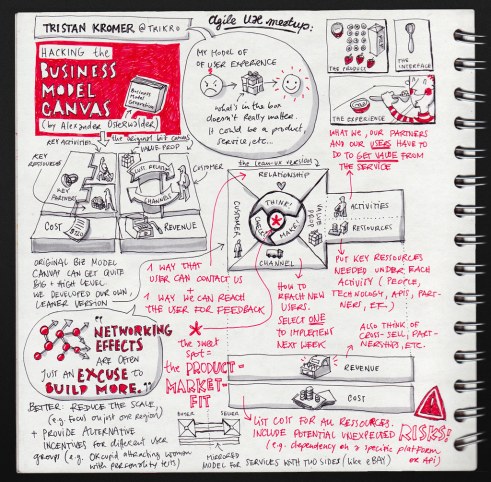
I got heavily involved in the lean startup movement early on, before there was a Lean Startup book and when design thinking was starting to gain ground. After I explored those ideas in my first tech startup and quickly figured out that it wouldn’t scale, I was asked to build an accelerator based on lean startup and design thinking for a non-profit funded by the Mexican government.
From there it snowballed. I’ve built or taught at a number of accelerators around the world and gradually moved into supporting governments and corporations with similar programs. Our mission at Kromatic is to create exponential innovation.
2) What are the key expertises of Kromatic, and how do you differentiate your value proposition from innovation agencies and consulting boutiques?
We’re not an agency or consultants per se. We don’t just deliver a consultant’s powerpoint and say “Good luck!” We don’t do innovation for someone, we do innovation with them to make sure they build that capability for their future.
We focus on exponential transformation. Meaning we want to train one person on innovation mindset and methodology, then have that person train another person, and then those two train two more, then four, then eight, sixteen, thirty two, sixty four, etc.

In today’s highly disruptive world, innovation is a critical competency. So we don’t just do workshops and train 20-40 people at a time. We want to teach hundreds of thousands of people. So we have to be able to train the next generation of trainers to make sure the mindset and knowledge expands exponentially.
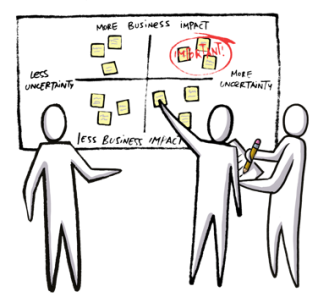
How did you reshuffle your offerings following the pandemic crisis?
We didn’t have to change much during the Covid crisis. Most of our coaching was already done online, and we had an online interactive curriculum already. I coached one of my first corporate teams, Swisscom, remotely from Silicon Valley before Zoom or Mural even existed.
So although we stopped doing live workshops, nothing else really changed. But our customers have had to deal with a lot of chaos, so we’ve been doing more traditional consulting on effective innovation strategies.
3) Your organization is based on partnership: how does it work? How many are you now, what is the geographical coverage, and how do you keep growing the pool of talents of the Kromatic team?
We have a core team at Kromatic mostly based in Silicon Valley, but since our clients are worldwide, we sometimes need local partners who can go into the field with innovation teams. We’ve worked with teams everywhere from Indonesia to Saõ Paolo.

That could be because a team needs hands-on assistance with an experimental method, or it could be because the time zone difference would have someone getting up at 2 in the morning to discuss customer discovery results. We have a due diligence process to vet partners if we haven’t trained them directly with our train the trainer program.

4) As an entrepreneur, what are the next steps for Kromatic, and how would you picture Kromatic in 5 years time? What are the main hurdles to go through to reach this target?
In an ideal situation, we’d be out of business because all of our clients would be training their own teams and contributing back to the general body of knowledge.
More realistically, we’re focused on making sure the knowledge coefficient remains as high as possible. By knowledge coefficient, I mean the percentage of knowledge retained by our trainers and passed on to the next generation. Any time you try to pass knowledge on to someone, some information gets lost. So maybe you train an innovation coach and they get 90% of what you’re trying to convey. Then of course, that coach will train others and those folks will only get 90% of the 90%. So they are left with 81% of the original knowledge, which is generally sufficient. But then we run into problems.
Any time you try to pass knowledge on to someone, some information gets lost. So maybe you train an innovation coach and they get 90% of what you’re trying to convey. Then of course, that coach will train others and those folks will only get 90% of the 90%. So they are left with 81% of the original knowledge, which is generally sufficient. But then we run into problems.
In theory, the next person would get 90% of 81%, or 72.9%. But what we’ve found is that there is a sharp decline in the third generation. That third generation is only getting 30% of the knowledge and mindset. So they’re really having a lot of trouble and adopting a cargo cult mentality where they are going through the motions of lean startup, but they don’t understand it.

For example, you might have a coach recommend running a landing page to a team because it’s a method they are comfortable with and have used before. But if the project is a high price B2B product pitched towards CFOs and Fortune 100 companies, that’s just the wrong experimental method.
It’s hard to find a channel specific to CFOs. You can’t do A/B testing with a total market of 100 customers, and CFOs don’t buy products based on landing pages. So the team risks getting a false negative and abandoning a good idea.
So to combat this knowledge decay, we’re working on providing a better knowledge base of innovation resources and teaching tools so the second generation can learn to teach better, or refer the third generation back to the original knowledge base.
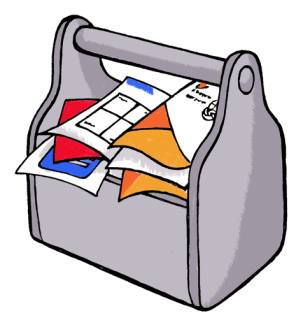
Essentially we’re focused on building training tools.
5) I enjoyed very much reading your article related to innovation metrics. I’ve started at the beginning of this year to help innovation managers of the 20 countries of Orange Africa to boost their local innovation: we have a stretched 2 stages process starting from ideation with employees and business units and value proposition exploration (stage 1), to short experiments, handling users interviews with digital mock-ups (stage 2); then, we hand-over to the idea owning entity for exploitation. If we succeed, we’ll test 200 innovative solutions over one year (velocity metric!) leveraging the 20 countries footprint. In this stage of innovation building, what kind of actionable metrics would you recommend?
Once you’ve got the basic funnel metrics set up, you should start looking at ecosystem metrics. Specifically, you want to identify all the potential obstacles that might be reducing funnel throughput and start measuring those obstacles more precisely.
For example, in a lot of countries like Mexico or Japan, there is still a stigma around being a failed entrepreneur. If you fail, you can’t go back and get a real job. So fear is a big obstacle to innovation. If you’re afraid of the potential punishment of failing, then you won’t start a new business, or maybe you won’t even say your big idea out loud.
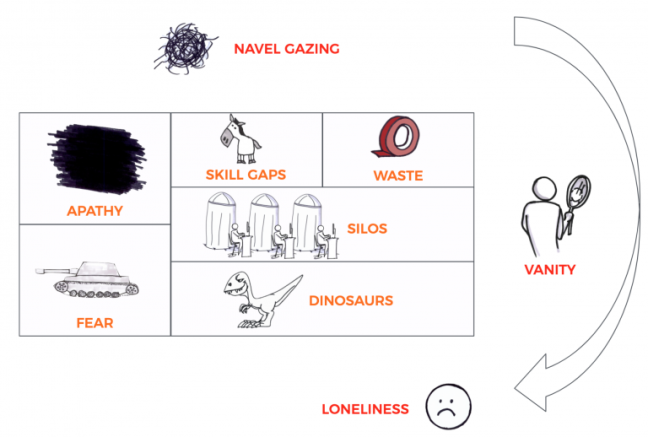
So you could measure that fear qualitatively through interviews, and quantitatively through some sort of survey. Or you could even measure the impact of the fear directly by looking at the length of time it takes a failed entrepreneur to find a new job, or the impact to their normal salary growth.
That direct measurement allows you to run some experiments on how to reduce that fear and see the impact of your solutions.
In your example, without any additional information on the obstacles in those African ecosystems, you should probably start measuring team experiment and insight velocity. Those metrics are the percentage of teams that are running experiments each week, and the percentage of those experiments that result in business insights.
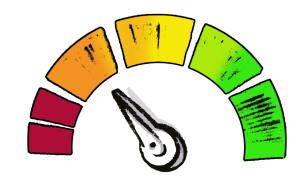
Those are my go-to metrics, and are fairly effective at identifying whether innovation teams are willing and able to run rapid experimentation effectively — meaning lean startup, design thinking, or agile innovation methodologies.
6) Considering the entrepreneurs and the corporations you’ve coached or came across in the African region, what is your view on African innovation trend, and the way to unlock its potential?
My experience with African innovation isn’t robust. I’ve had quite a few office hour calls from Nigeria and South Africa. I’ve done some lectures with corporates and consulted with an accelerator. I’ve been to some conferences.
All I can really say is that the entrepreneurs I’ve met from Africa are as capable, inspired, and intelligent as anywhere in the world. The main difficulty seems to be the economic climate and innovation ecosystem. The consumer demands seem to be very vibrant and diverse and require a lot of local knowledge.

For example, I met one entrepreneur making a Hajj friend finder — an app to help keep pilgrims together during their long trip to Mecca. That’s not something an engineer in Silicon Valley is going to solve. They just don’t understand the consumer need.
I wish I could say there just needs to be these three things — X, Y, & Z — and everyone will be successful, but I don’t have the local knowledge either. The situation in Ghana is going to be very different from Morocco, so there is no single piece of advice that’s going to work for everyone.
I can support as best I can with free office hours whenever I’m asked. But ultimately, African entrepreneurship is going to be led by Africans, not by someone like me sitting in Silicon Valley.
7) In the context of the crisis, I’ve designed a self-assessment tool to assess the resilience of a corporate innovation organization, questioning how it fares through 10 key areas: your innovation in review. In an environment of resource scarcity and a need to reengage customers, on which metrics and dashboard for measuring innovation ecosystems would you recommend innovation managers to focus on?
The word focus is key here. I’ve got a long list of metrics I’d love to collect for a comprehensive innovation ecosystem dashboard, but that’s not focused.
It’s been a problem for a while, but the biggest issue the crisis revealed is that most companies have no innovation strategy, and don’t have the ability to create a strategy. They haven’t been looking past quarterly targets. They are not building capabilities for the future. They don’t have any core competence in dealing with uncertainty. So a lot of companies just really have no idea what to do.

These companies are like ships at the mercy of the waves, without a rudder or a compass. Some, like delivery services, are doing well because their market is booming. Some, like the restaurant industry, are being crushed because their market has disappeared.
So I would focus on strategy and portfolio metrics first:
- Does the company have an innovation strategy? (Binary)
- What percentage of the employees understand the strategy and how it affects their role?
- Is the innovation portfolio and budget being allocated according to that strategy? (The variance from target allocation).
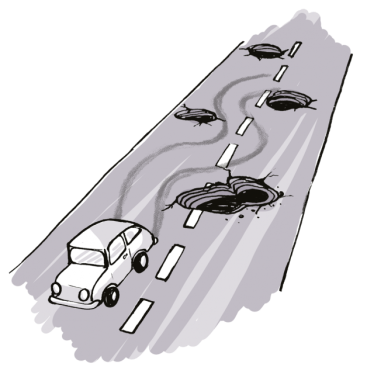
8) Do innovation metrics imply and interweave with the long-run management of an innovation portfolio? Extending your great article on innovation portfolio, would you share what is the best way to combine metrics with portfolio?
I suppose that depends on what you mean by innovation metrics, but I would say yes, absolutely.
There are five levels I consider when I think about innovation metrics:
- The Individual – do individuals have the right skills and mindset to engage in innovation?
- The Team – is the team capable of getting around the Build-Measure-Learn loop and iterating?
- The Project – is this a good or bad project? Will it deliver ROI or mission impact?
- The Portfolio – What is the total impact of all those individual projects in relation to the innovation strategy?
- The Ecosystem – does the environment (whether corporate or national) efficiently support innovation?
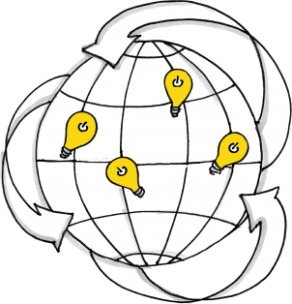
The metrics we were talking about previously are really innovation ecosystem metrics. That’s very high level thinking about the support system for innovators and innovation projects.
We were specifically talking about metrics for measuring innovation strategy previously. Are we actually allocating our budget according to the strategy?
The portfolio level is basically saying, ok…you’ve now hopefully allocated your budget according to your strategy….did you make any money? Did you generate any interesting innovation options?
This is the level where we measure the ultimate output that most people care about. You can have the best culture, the best people, the best ideas, but if you don’t deliver ROI at the end of the day, you’re in trouble.
So in terms of combining innovation metrics to get to that portfolio, you need to come from the top and understand the strategy metrics, but then come from the bottom and add up the value of the individual projects to understand that value of the portfolio.
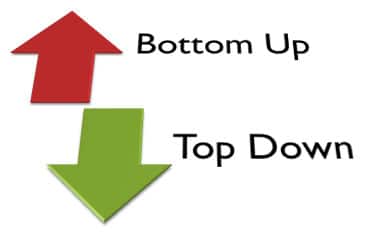
That means, even at the early stages of a project, you need a robust way to translate qualitative insights from customer interviews into reasonable financial hypotheses that lead to a business model. We call that a hypothesis-driven financial model.
Given the uncertainty of those initial hypotheses, you can’t use a standard business case. You need to use statistical modeling like a Monte Carlo simulation. But that’s pretty deep.

To summarize, proper innovation & portfolio management depends on having a coherent innovation strategy and transforming project level qualitative insights into quantitative financial projections.

1 Comment